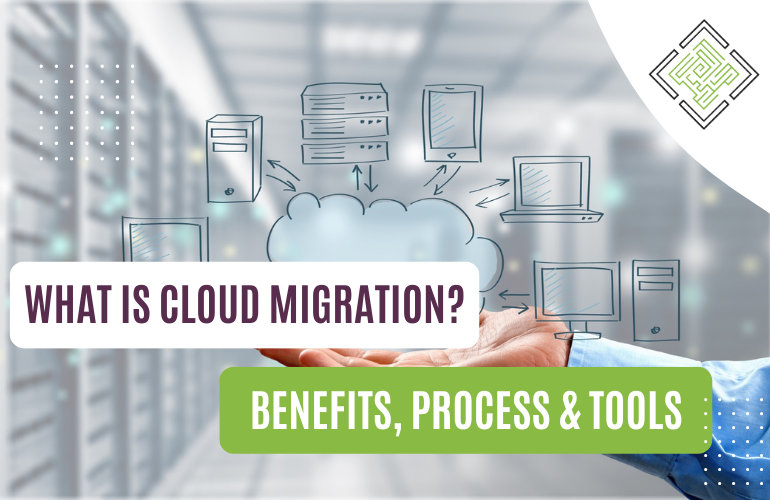
Cloud migration refers to the process of moving an organisation’s data, applications, and IT infrastructure from on-premises servers or traditional data centres to cloud-based services. The primary goal of cloud migration is to leverage the benefits of cloud computing, such as scalability, flexibility, cost efficiency, and improved performance. It involves the transition of various elements of an organisation’s technology stack, including software, databases, storage, and networking, to cloud-based environments.
The cloud offers different deployment models, including public, private, hybrid, and multi-cloud options. Public clouds are operated by third-party providers and offer resources on a shared infrastructure over the internet, like Amazon Web Services (AWS), Microsoft Azure, and Google Cloud Platform (GCP). Private clouds, on the other hand, are dedicated to a single organisation and can be hosted on-premises or by a third-party provider. Hybrid clouds combine both public and private cloud elements, allowing organisations to maintain some data and applications on-premises while utilising cloud resources when needed. Multi-cloud strategies involve using multiple cloud providers to avoid vendor lock-in and optimise services.
Cloud migration offers several advantages to organisations, including:
Cloud migration allows organisations to scale their computing resources up or down based on changing demand. Traditional on-premises setups often require predicting peak workloads and investing in hardware and infrastructure to accommodate them, which can lead to underutilisation during low-demand periods. With cloud services, organisations can dynamically adjust resources to match current requirements, ensuring optimal performance and cost-efficiency.
Cloud providers offer features like auto-scaling, which automatically adds or removes resources based on predefined thresholds. This elasticity allows businesses to handle sudden spikes in user traffic, seasonal variations, or unforeseen events without service disruptions or performance bottlenecks.
Cloud services are generally billed on a pay-as-you-go or consumption-based model. This means organisations only pay for the resources they use, avoiding upfront capital expenditures on hardware and software. The cloud also eliminates the need for maintaining and managing physical infrastructure, which can reduce operational expenses.
Furthermore, the cloud’s flexible pricing allows organisations to scale resources as needed, optimising costs and avoiding overprovisioning. Organisations can also leverage cost-saving options such as spot instances (low-cost, short-term compute resources) and reserved instances (long-term commitments at discounted rates) to further optimise their spending.
The cloud provides businesses with unparalleled flexibility to deploy and manage applications and services. Cloud-based environments allow for rapid provisioning of resources, enabling quick deployment of new applications or features. This agility is particularly beneficial for businesses with dynamic workloads or those seeking to innovate and bring products to market faster.
Additionally, cloud services offer a wide range of tools and APIs that facilitate integration with other cloud services or third-party applications. This flexibility simplifies the process of building comprehensive solutions by combining various cloud-native services and external tools.
Cloud providers maintain robust and redundant infrastructures across multiple data centres, ensuring high availability and fault tolerance. This redundancy means that if one data centre experiences issues, services can seamlessly switch to another, minimising downtime and disruptions.
Moreover, cloud providers often offer Service Level Agreements (SLAs) that guarantee a certain level of uptime and availability. This assurance gives businesses confidence in the reliability of their services and applications.
Reputable cloud providers invest heavily in security measures to protect their infrastructure and customer data. They employ advanced security technologies, encryption protocols, and continuous monitoring to mitigate potential threats and vulnerabilities.
Cloud providers are also compliant with industry standards and certifications, such as ISO 27001, SOC 2, and HIPAA, which demonstrate their commitment to security and data privacy. Leveraging the expertise and resources of cloud providers can often provide higher levels of security and compliance than many organisations can achieve on their own.
However, it’s important for organisations to play an active role in implementing security best practices and ensuring that they configure cloud resources and access controls correctly to maintain a secure environment.

The cloud migration process typically involves the following steps:
The assessment phase is the initial step of the cloud migration process and involves a comprehensive evaluation of the organisation’s existing IT infrastructure. This includes identifying applications, data, and services that are suitable for migration to the cloud. Key activities in this phase include:
The planning phase involves developing a comprehensive migration plan that outlines the strategy, timeline, and resource allocation for the migration project. This plan should address potential risks and challenges and include contingency measures. Key considerations in this phase include:
The data and application migration phase involves moving the identified applications, databases, and data to the cloud environment. The actual migration process will depend on the chosen migration strategy. Common migration approaches include:
It is crucial to thoroughly test each migration before moving on to the next phase to minimise disruptions and ensure data integrity.
The testing phase is essential to validate the success of the migration and ensure that all applications and data are functioning correctly in the cloud environment. Key types of testing include:
After the migration is complete, organisations need to optimise their cloud resources to ensure cost-effectiveness and optimal performance. This involves:
Continuous monitoring and support are crucial for successful cloud migration. In this phase, organisations need to:
By following these steps and best practices, organizations can successfully migrate their data, applications, and IT infrastructure to the cloud and leverage its benefits to improve scalability, flexibility, cost efficiency, and performance.

Cloud migration involves a variety of tools and services to facilitate a smooth and efficient transition from on-premises environments to the cloud. These tools address different aspects of migration, such as discovery, assessment, data transfer, application migration, and ongoing management. Here are some commonly used tools and services for cloud migration:
Remember that the choice of tools will depend on the specific cloud provider (AWS, Azure, Google Cloud) and the migration strategy (rehosting, refactoring, re-platforming). Additionally, managed services provided by the cloud providers can also streamline migration processes, offering built-in migration tools and services to ease the transition.
Empowering London Businesses with Efficient IT Solutions to Save Time and Stay Ahead of the Competition.